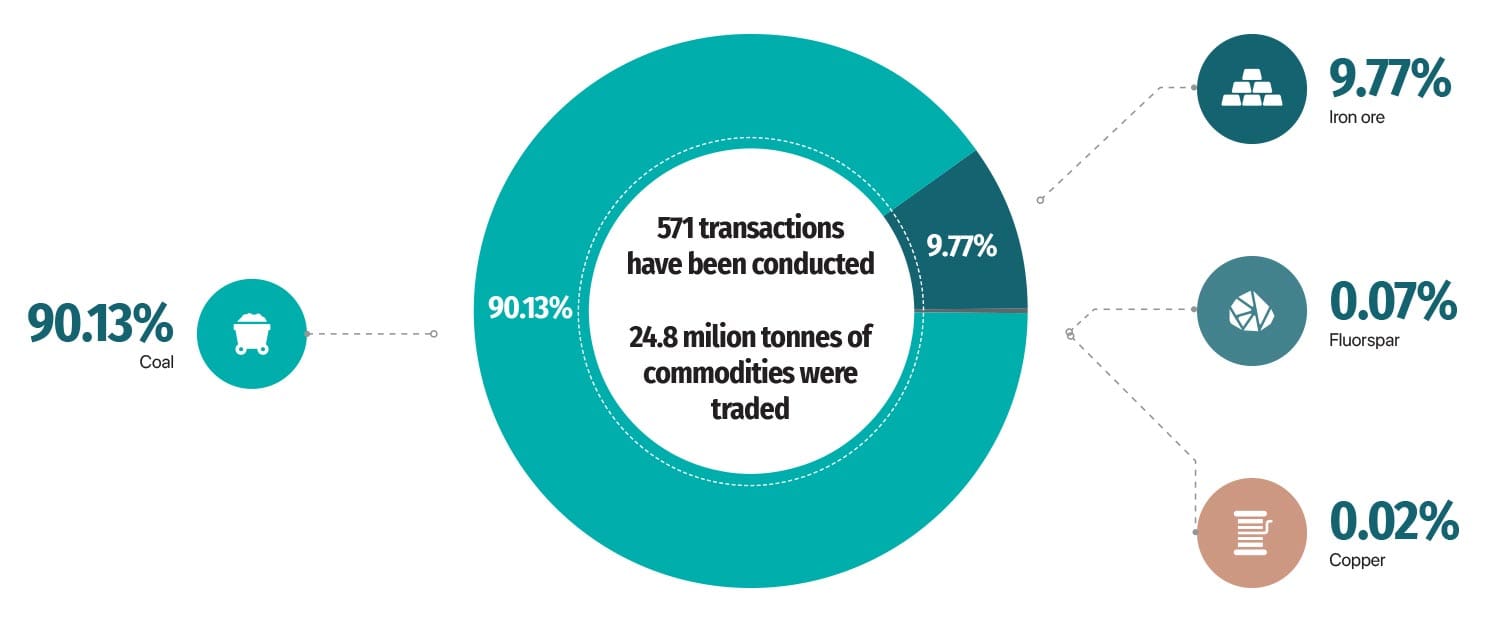Mongolia established the Exchange of Mining Commodity in 2023 following the approval of Law on the Exchange of Mining Commodity. The purpose of the law is to ensure open and transparent trading of mining commodity by state-owned enterprises, facilitate commodity trade agreements, oversee compliance and monitor contract implementation.
Under the law, the Mongolian Stock Exchange has been granted a special license to operate the trading of mining products and transactions have been conducted through this exchange since 2023. Currently, commodities such as coal, iron ore, fluorspar and copper concentrated are being traded.
Thus far, companies such as Erdenes Tavan Tolgoi, the locally-owned Tavantolgoi, Energy Resources (HK-listed Mongolian Mining Corporation), Khangad Exploration and Southgobi Diamond have sold coal through the exchange. Plus, Erdenet Mining Corporation and Usukh Zoos have traded copper concentrates while Monrostsvetment JSV and Darkhan Metallurgical Plant have traded their respective products. Meanwhile Oyu Tolgoi LLC is reportedy planning to trade its copper concentrate via the exchange after the expiration of its current sales contracts. Although it is not officially confirmed yet.
The end users and buyers of Mongolia’s mining products are typically the concentration and processing plants in northern China. Due to factors such as payment terms and delivery timelines, these plants often rely on intermediary buyers rather than making direct purchases. Since the launch of the Mining Commodity Exchange, buyers have diversified beyond China, with 424 companies from various countries, including Hong Kong, Singapore, Kazakhstan, South Korea, the United States, Japan, and Switzerland, registering as buyers. However, not all actively participate in trading; only 70–80 companies regularly engage in transactions, according to local news agency GoGo News.
MINING COMMODITY EXCHANGE TRANSACTION (AS OF 2024)
How to participate in the trading of mining commodities?
Individuals and legal entities wishing to participate in the trading of mining products must meet the following three requirements:
- 1. Buyer Registration: The buyer must register as a purchaser on the comex.mse.mn system, ensuring that all necessary documentation is complete and verified.
- 2. Agreement with the Mongolian Stock Exchange: The buyer must sign a trading agreement with the Mongolian Stock Exchange to participate in transactions.
- 3. Deposit Requirement: The buyer must fully pay a 10% margin deposit for participation in that day’s trading session.
To trade mining products, the following types of trading contracts are used:
- Spot contracts
- Forward contracts
- Futures contracts
- Option contracts
As of 2024, spot and forward contracts, which involve the immediate delivery of traded products to buyers, are being commonly used.
The trading price is aligned with international market prices and is based on the principles of fairness, market demand, and supply. The price will be announced at border checkpoints of neighboring countries, and the final price will be determined by the parties agreeing to the price announced by the Mongolian Stock Exchange during the transaction.
Trading will occur on business days between 10:00 AM and 5:00 PM and will be conducted in three stages.

